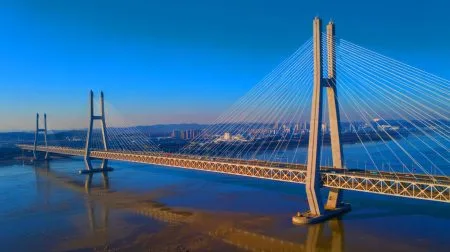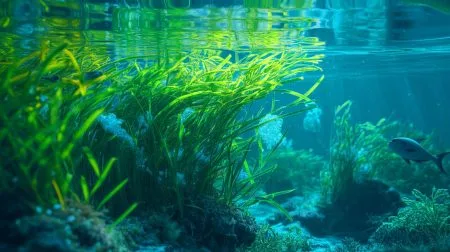| IN A NUTSHELL |
|
The alarming collapse of glaciers worldwide serves as a stark reminder of the intensifying threat posed by climate change. The recent incident in a Swiss village, where a glacier collapse resulted in a catastrophic landslide, underscores the urgent need to address the destabilizing effects of global warming. As glaciers continue to retreat and destabilize, the risks to human life and infrastructure become increasingly severe. This article explores the intricate dynamics at play, revealing how climate change is exacerbating the instability of glaciers and threatening communities across the globe.
Debris Triggers Rapid Glacier Shift in Southern Switzerland
The Birch Glacier in southern Switzerland has become a symbol of the precarious situation facing many glaciers today. Initially, debris covering the glacier acted as an insulator, temporarily slowing its melting. However, the weight of the debris eventually led to a rapid shift in the glacier, creating a hazardous situation for the nearby village of Blatten. Authorities were forced to evacuate around 300 residents and all livestock as the entire mountainside showed signs of potential collapse.
Such incidents are not isolated. Around the world, glaciers are experiencing similar shifts and collapses. In Alaska, the city of Juneau faces annual threats from glacial floods caused by retreating ice. In Italy, a section of the Marmolada glacier broke off during a heatwave, resulting in a deadly avalanche. These events illustrate the increasing frequency and severity of glacier-related disasters driven by climate change.
Experts warn that as glaciers melt and retreat, they often form lakes at their base. These glacial lakes can burst unexpectedly, causing devastating downstream floods. The growing instability of glaciers is a clear indication of the serious risks faced by communities living in proximity to these natural wonders.
Switzerland Sees Record Glacier Loss as Warming Accelerates
Switzerland, home to the most glaciers in Europe, is witnessing unprecedented glacier loss. Since 1950, the glaciers in the Alps have lost half of their area, and the rate of ice loss is accelerating. In 2023 alone, Switzerland experienced a 4% reduction in glacier volume, following a record 6% drop in 2022. This rapid decline is a direct consequence of global warming driven by fossil fuel emissions.
The situation is similarly dire in Peru, where over half of the glacier surface has vanished in the past 60 years. Between 2016 and 2020 alone, 175 glaciers disappeared due to rising global temperatures. The loss of glaciers is not just an environmental issue; it has significant implications for water resources, agriculture, and local ecosystems.
Even if global temperatures stabilize at current levels, projections indicate that 40% of the world’s glaciers will disappear. However, adhering to the 2015 Paris Agreement’s goal of limiting warming to 1.5 degrees Celsius could potentially preserve twice as much glacier ice. The findings highlight the importance of immediate action to curb emissions and mitigate further damage.
The Global Impact of Glacier Instability
Glacier instability is a global issue with far-reaching consequences. The collapse of glaciers not only threatens lives but also affects water supplies, agriculture, and ecosystems. In regions like Alaska, where glaciers are integral to the environment, their disappearance could have catastrophic effects on local communities and wildlife. The growing instability of glaciers poses a significant risk to thousands of people worldwide, making it a critical issue that demands urgent attention.
Glaciers are vital sources of freshwater for millions of people, particularly in regions where they feed rivers and lakes. As glaciers retreat, the availability of freshwater diminishes, impacting agriculture, drinking water supplies, and hydropower generation. The loss of glaciers also contributes to rising sea levels, posing a threat to coastal communities around the world.
Addressing glacier instability requires a comprehensive approach that includes reducing greenhouse gas emissions, enhancing monitoring systems, and developing adaptive strategies for affected communities. By taking action now, we can help mitigate the impact of glacier loss and protect vulnerable populations from the devastating consequences of climate change.
Future Prospects and the Urgency of Action
Despite the grim outlook, there is hope for preserving the remaining glaciers if immediate action is taken to combat climate change. However, experts caution that many glaciers are already doomed to disappear regardless of future warming. In certain regions, such as parts of Alaska, the current climate no longer supports glacier survival, and their eventual disappearance seems inevitable.
Preserving glaciers requires a multifaceted approach that combines scientific research, policy changes, and community engagement. Governments and international organizations must prioritize climate action to halt the progression of global warming. By investing in sustainable practices and promoting renewable energy sources, we can reduce emissions and curb further glacier loss.
As we move forward, it is crucial to raise awareness about the urgent need to protect our planet’s glaciers. The stakes are high, and the time for action is now. How can we collectively work towards a future where glaciers are preserved for generations to come?
Did you like it? 4.6/5 (26)








Is there still hope for saving the glaciers, or is it too late? 🌍
Thank you for shedding light on this critical issue. It’s truly alarming!
Why is it that only 40% of glaciers are expected to vanish and not more?
Can we just move the glaciers somewhere colder? 😄
How will the loss of glaciers affect global sea levels?
Great article! How can individuals contribute to mitigating glacier loss?
Another article exaggerating climate change… 🙄